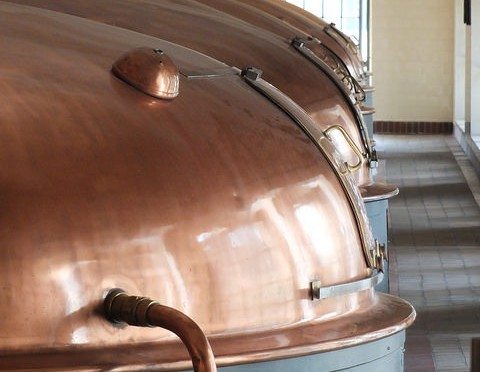
When in Bohemia, you are in the cradle of traditional beer brewing. The beers here are outstanding … I marvel that I never came across a bad, or even a marginal brew among the many I sampled. Where the Franconian Switzerland is said to have the most breweries per capita of any region in the world (read about that here), Bohemia is said to have the highest per capita beer consumption of any region. There are more than a few breweries as well … I found an unofficial map of them being shared on Google Maps that provides drill-downs to links to the brewery sites.
The Czech word for beer is pivo, and breweries here are called pivovars. Nearly all pivo in Bohemia is pilsener lager and I observed it to be generally served in two major varieties Světlé (a light, golden beer) and Černé (black). Světlé is the pivo generally found on tap, and I found the Černé a bit more difficult to find. There are also amber (Polotmavé) and dark (Tmavé) varieties but I didn’t observe them being available much. Top-fermented wheat beer (Pšeničné pivo) is also available and I did have a chance to try one of those. The strength ranges from 3-9% abv. Another notation that appears on the beer branding is a degree value that doesn’t necessarily correspond to the color. If I understand it correctly, this indicates the fermentation temperature typically in the range of 10° to 13°. If someone understands this better, please post a comment and explain.


Something I should also point out is that great beer is very inexpensive in the Czech Republic. We were typically paying 22 Korunas (about $1.10) for a .5 l (a bit more than a pint) draft in the pub and about 10 Koruna (about .50 cent) for a bottle at the grocery.
Beer in the Czech Republic has a long history, with brewing taking place in Monasteries as far back as the 900’s. Pilsner Urquell, the world’s first pilsner, is a flagship brand and Budweiser Budvar (branded as Czechvar when exported to the US), Kozel, Gambrinus, Staropramen, Krušovice, Bernard, and Svijany were other big-time brands I encountered. Most hops used in Czech beers is Saaz, grown in an area north of Prague in the region of Žatec.

The story of Budweiser is an interesting sideshow. The German name for the city of České Budějovice is Budweis. Budweiser was brewed there for a lot of years before the existence of Anheuser-Busch in the US. When the US firm started branding their beer “Budweiser”, big legal messes ensued (you can read about that here if you are interested). The simple version of the net effect of how it was settled out is that US Budweiser is now branded “Bud” when sold in the European Union and České Budweiser is branded “Czechvar” when sold in the North America.

The sophisticated brewery tour at the pivovar Plzeňský Prazdroj in Pilsen was a treat. It is comprehensive — covering all aspects of the brewing and bottling process both from an historical and a present day perspective. Pilsner Urquell was the first “pilsner” type beer in the world invented in the first half of the 1800’s by Josef Groll. Most all of the traditional brews in the Czech Republic, Austria, and Germany trace back to this development. I tasted malted barley (someone should sell that as a snack food), inhaled the hops (turns out hops are a THC-less cousin of the cannabis), and marveled at the high speed bottling operation. When visiting the extensive lagering cellars beneath the brewery property, you are treated to an unfiltered, unpasteurized draw of Pilsener-Urquell from a huge 38 HL (about 1000 gallons) wooden barrel. Couldn’t be a finer tasting beer in my book. The bottled export version available outside of the Czech Republic is no slouch, but doesn’t do justice. Relatively little Pilsener-Urquell is still fermented in wooden barrels like this, but some is still faithfully made this way as a quality control check against the modern brewing processes.
Following are photos from the Plzeňský Prazdroj tour and from other beer experiences around Bohemia.
Note: Thank you to my friend Samuel Olek for coming up with the title of this article … and for sharing a bunch of good beer and talk.




Control batch in cellars underneath the brewery property — there are many kilometers of these cellars, mostly unused since the invention of mechanical refrigeration.



















Leave a Reply